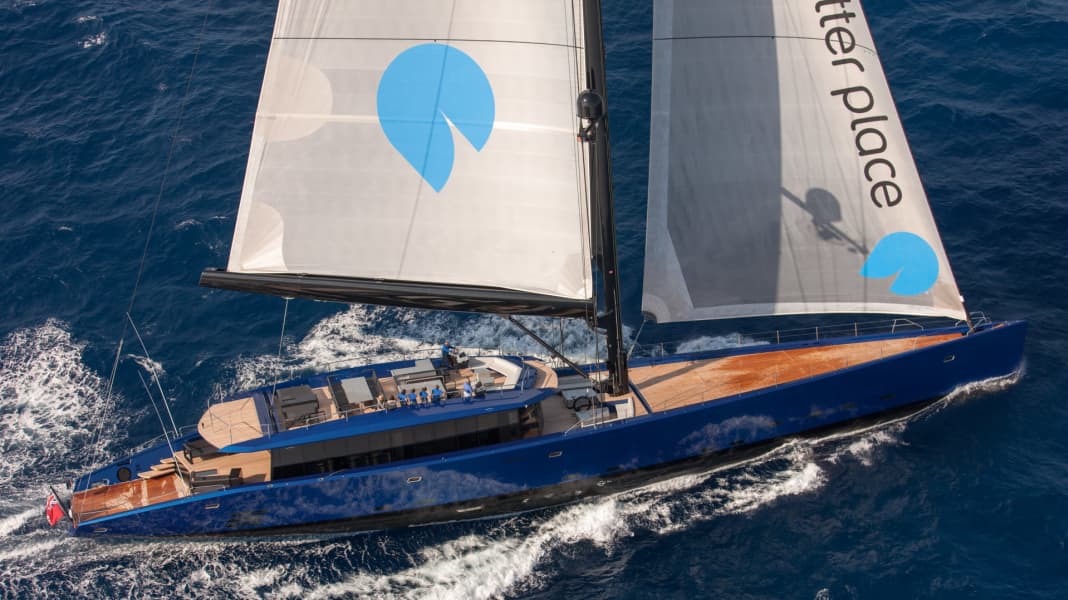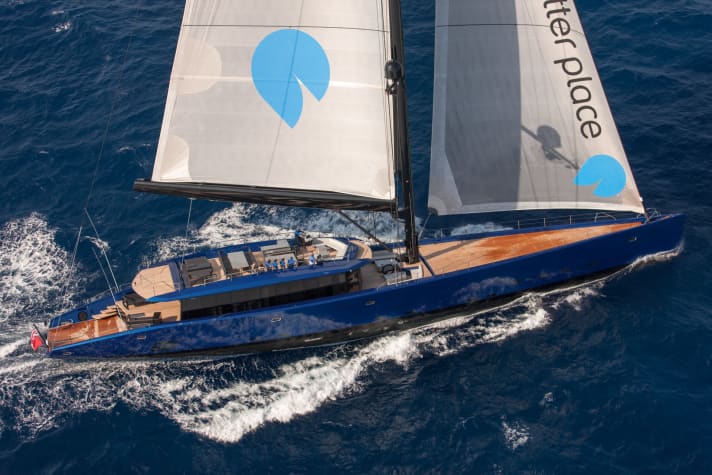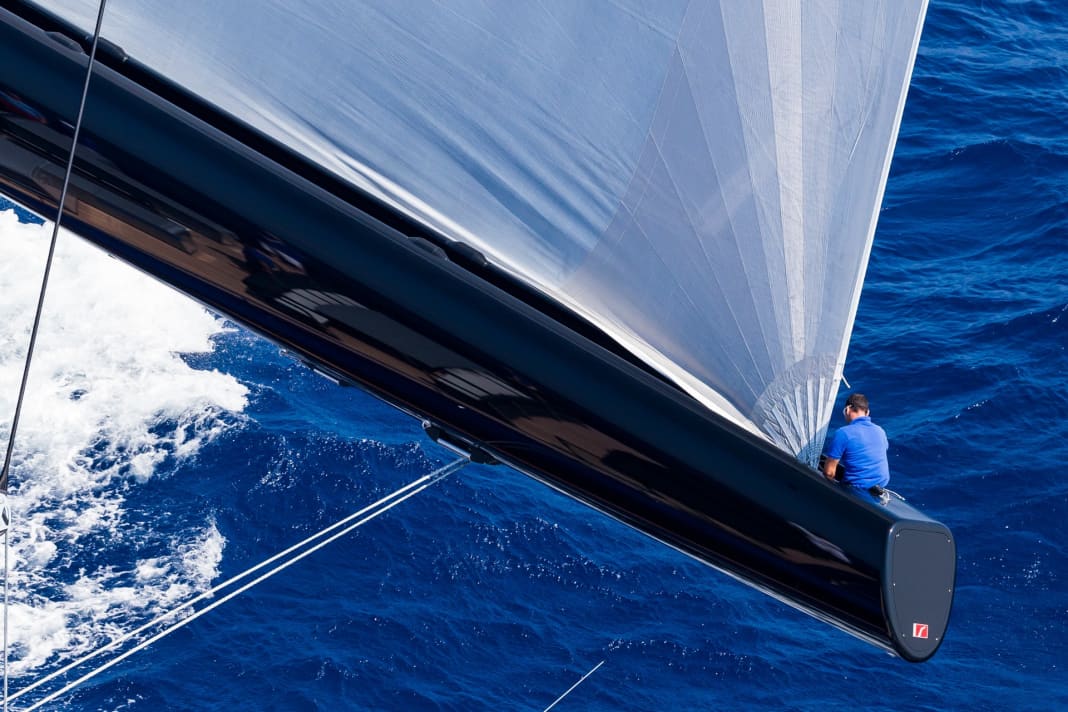

The colour is a statement. "Bugatti blue," says Wally project manager Giacomo Lais. "The owner's 'Veyron' shines in the same metallic colour."
"Better Place" is an eye-catcher. The sheer size makes an impression. The bulwark rises into the sky like a house, and the deckhouse, which is completely glazed with floor-to-ceiling windows, has enormous proportions when viewed from the jetty. Despite a harbour basin crammed with impressive yachts, the 50.50-metre-long "Better Place" transformed the jetties of the Monaco Yacht Show in its immediate vicinity into impassable zones as a showstopper.
show into impassable zones. Crowds of people clogged the narrow paths in front of the giant's impressive 30 square metre stern terrace, causing many a late meeting.
But the fuss is justified. Wally boss Luca Bassani laminated himself once again into the nautical history books with the 250-tonne lightweight construction. The yacht, which the Italian shipyard simply calls the "Blue Water High Performance Sloop", is not only the largest project ever realised by Wally, it is also the largest slip-rigged carbon sailing yacht in the world. Superlatives, as Bassani likes them.
What's more, "Better Place" is the first sailing yacht to be designed, built and equipped in accordance with the RINA Green Star regulations. "This 'Green Star' stamp is only awarded to yachts that are equipped with particularly environmentally friendly exhaust, waste water and propulsion systems," explains Giacomo Lais. The owner, a successful businessman from the Middle East, attached great importance to this "extra-green" certification. Especially as he is investing in an electric car company that aims to rid the world of car emissions sooner or later and make it a better place. It is no coincidence that the company logo adorns the 3DL sails of the Flybridge Wally.
It is therefore not surprising that a diesel-electric propulsion package from Siemens operates in the "Better Place" engine room, accessing three Caterpillar generators with a total output of 705 kilowatts. These not only move the shaft, including the controllable pitch propeller, but also provide the energy for all other on-board systems, including the hydraulic units.






